El hetsmek' como expresión simbólica de la construcción de los niños mayas yucatecos como personas

Esta obra está bajo una licencia internacional Creative Commons Atribución-NoComercial-SinDerivadas 4.0.
Contenido principal del artículo
Contenido principal del artículo
Resumen
A partir de la relación entre cosmovisión y etnoteorías parentales y su expresión en prácticas de crianza infantil me he aproximado a la construcción de la persona en los primeros años de vida entre los mayas de Yucatán. Centro este trabajo en la ceremonia de hetsmek’, ya que sugiero puede verse como expresión del papel que juegan las entidades anímicas y la agencia humana en las etnoteorías parentales, al tomar en cuenta la conformación de los niños. Los padres, apoyados en los padrinos, contribuyen simbólicamente a abrirle el camino al infante para que desarrolle las capacidades que definirán su entendimiento. En conjunto evocan las que caracterizan a los seres de maíz en el génesis maya. En particular, la responsabilidad y la adquisición de conciencia se relacionan con ik’, atributo que permite al individuo relacionarse con el mundo al igual que ool y cuyos significados múltiples y relaciones requieren mayor investigación para entender la construcción de la persona entre los mayas de Yucatán.
Detalles del artículo
Citas
Arias, Jacinto, 1975, El mundo numinoso de los mayas: Estructura y cambios contemporáneos. SEP Setentas, México, DF.
Barrera Vázquez, Alfredo, Juan Ramón Bastarrachea M., William Brito Sansores, Refugio Vermont Salas y Domingo Dzul Poot, 1991, Diccionario Maya. Porrúa, México, DF.
Baxter, Jane Eva, 2001, "The archaeology of childhood in context." Archaeological Papers of the American Anthropological Association, 15, pp. 1-9. University of California Press, Berkeley, CA. DOI: https://doi.org/10.1525/ap3a.2005.15.1
Boremanse, Didier, 1998, Hach Winik: The Lacandon Maya of Chiapas, Southern Mexico. University of Texas Press, Austin.
Bracamonte, Pedro, Jesús Lizama y William Torres, 2005, Tocando Fondo... Resultados Básicos de la Encuesta sobre Marginalidad, Pobreza e Identidad del Pueblo Maya de Yucatán (EMPIMAYA 2004). CD-ROM. CIESAS Programa Peninsular, Mérida, México.
Bricker, Victoria, Eleuterio Po'ot Y. y Ofelia Dzul de P., 1998, A dictionary of the Maya language as spoken in Hocabá, Yucatán. University of Utah Press, Salt Lake City.
Cervera, María Dolores, 1994, "Caretaker-infant interaction and nutrition among Yucatec Mayan children: An intervention study." disertación doctoral, Boston University, Boston, MA.
Cervera, María Dolores, 2007, "Etnoteorías parentales, alma y enfermedades infantiles entre los mayas de Yucatán" Aceptado para publicación en Estudios de Antropología Biológica XIII. Instituto de Investigaciones Antropólógicas, UNAM, México, DF.
Cervera, María Dolores y Rosa María Méndez, 2006, "Temperament and ecological context among Yucatec Mayan children." International Journal of Behavioral Development, 30, pp. 326-337. Sage, London. DOI: https://doi.org/10.1177/0165025406072794
Chávez Guzmán, Mónica, 2002, "Medicina y Cosmovisión Maya Colonial. Terapias Curativas en Tres Fuentes Yucatecas del Siglo XVI." Tesis de Maestría, Facultad de Ciencias Antropológicas, Universidad Autónoma de Yucatán, Mérida.
Chávez Guzmán, Mónica, 2004, "El Cuerpo Humano y la Enfermedad entre los Mayas Yucatecos." Arqueología Mexicana, XI, pp. 28-29. Editorial Raíces, México, DF.
D'Andrade, Roy G. y Claudia Strauss eds., 1997, Human Motives and Cultural Models. Cambridge University Press, New York.
Dasen, Pierre R., 2003, "Theoretical frameworks in cross-cultural developmental psychology: An attempt at integration." En Cross-cultural perspectives in human development: Theory, research, and applications, editado por T. S. Saraswathi. pp. 128-165. Sage India, New Delhi.
De León, Lourdes, 2001, "¿Cómo construir un niño zinacanteco?": Conceptos espaciales y lengua materna en la adquisición del tzotzil." En La adquisición de la lengua materna: español, lenguas mayas, euskera, editado por Celia Rojas y Lourdes de León. pp. 99-124. UNAM-CIESAS-México. México, DF.
De León, Lourdes, 2005, La llegada del alma: Lenguaje, infancia y socialización entre los mayas de Zinacantán. INAH-CIESAS-México. México, DF.
Fortuny, Patricia, 2004, "Transnational hetzmek': Entre Oxkutzcab y San Pancho." En Estrategias identitarias: Educación y la Antropología histórica en Yucatán, editado por Juan A. Castillo Cocom y Quetzil E. Castañeda. pp. 225-254. Universidad Pedagógica Nacional, The Open School of Ethnography and Anthropology y Secretaría de Educación de Yucatán, Mérida, México.
Freidel, David, Linda Schele y Joyce Parker, 1993, Maya Cosmos. William Morrow, New York.
Gaskins, Suzanne, 1996, "How Mayan parental theories come into play." En Parents' cultural belief systems: Their origins, expressions, and consequences, editado por Charles M. Super y Sara Harkness. pp. 345-363. Guilford, New York.
Gaskins, Suzanne, 1999, "Children's daily lives in a Mayan village: A case study of culturally constructed roles and activities." En Children's engagement in the world: Sociocultural perspectives, editado por A. Göncü. pp. 25-61. Cambridge University Press, Cambridge, UK.
Goodnow, Jacqueline J. y W. Andrew Collins, 1990, Development According to Parents: The Nature, Sources and Consequences of Parents' Ideas. Erlbaum, East Sussex, UK.
Gossen, Gary H., 1989, Los chamulas en el mundo del sol. Centro Nacional para la Cultura y las Artes-INI, México, DF.
Gossen, Gary H., 1994, "From Olmecs to Zapatistas: A once and future history of souls." American Anthropologist, 96, pp. 553-570. University of California Press, Berkeley, CA. DOI: https://doi.org/10.1525/aa.1994.96.3.02a00070
Gottlieb, Alma, 2004, The afterlife is where we come from: The culture of infancy in West Africa. The University of Chicago Press, Chicago. DOI: https://doi.org/10.7208/chicago/9780226330631.001.0001
Greenfield, Patricia M., 2004, Weaving generations together: Evolving creativity in the Maya of Chiapas. School of American Research, Santa Fe.
Guiteras, Calixta, 1986, Los peligros del alma: Visión del mundo de un tzotzil. FCE, México, DF.
Hanks, William F., 1990, Referential practice: Language and lived space among the Maya. University of Chicago Press, Chicago.
Harkness, Sara y Charles M. Super, 1992, "Parental ethnotheories in action." En Parental belief systems: The psychological consequences for children, editado por Irving E. Sigel, Ann V. McGillicudy-DeLisi y Jacqueline J. Goodnow. pp. 373-391. Erlbaum, Hillsdale, NJ.
Houston, Stephen y Karl Taube, 2000, "An archaeology of the senses: Perception and cultural expression in Ancient Mesoamerica." Cambridge Archaeological Journal, 20, pp. 261294. Cambridge Journals, Cambridge, UK. DOI: https://doi.org/10.1017/S095977430000010X
López Austin, Alfredo, 1989, Cuerpo humano e ideología: Las concepciones de los antiguos nahuas. UNAM, México, DF.
López Austin, Alfredo, 1994, Tamoanchan y Tlalocan. FCE, México, DF.
López S., Ricardo (2006) Identidad militante de los mayas urbanos de clase media. En '52o. Congreso Internacional de Americanistas, 17-21 julio'. Universidad de Sevilla, Sevilla Maas Collí, Hilaria, 1983, "Transmisión cultural en Chemax, Yucatán. Un enfoque etnográfico." Departamento de Estudios sobre Cultura Regional. Universidad de Yucatán, Informe Final de Investigación, Mérida, Yuc.
Morton, Helen, 1996, Becoming Tongan: An ethnography of childhood. University of Hawaii Press, Honolulu, HI. DOI: https://doi.org/10.1515/9780824840495
Nash, June C., 1970, In the eyes of the ancestors: Belief and behavior in a Maya community. Yale University Press, New Haven, CT.
Nsamenang, A. Bame, 2003, "Conceptualizing human development and education in Sub- Saharan Africa at the interface of indigenous and exogenous influences." En Crosscultural perspectives in human development: Theory, research, and applications, editado por T. S. Saraswathi. pp. 213-235. Sage India, New Delhi.
Paul, Lois y Benjamin D. Paul, 1975, "The Maya midwife as sacred specialist: A Guatemalan case." American ethnologist, 2, Sex Roles in Cross-Cultural Perspective, pp. 707-726. University of California Press, Berkeley, CA. DOI: https://doi.org/10.1525/ae.1975.2.4.02a00080
Pepper, Stephen C., 1942, World hypoteses: A study of evidence. University of California Press, Berkeley, CA.
Pitarch, Pedro, 1996, Ch'ulel: Una etnografía de las almas tzeltales. FCE, Mexico, DF.
Pye, Cliffton, 1986, "An ethnography of Mayan speech to children." Working Papers in Child Language 1, pp. 30-58. The Language Program, University of Kansas. DOI: https://doi.org/10.1017/S0305000900000313
Quinn, Naomi y Dorothy Holland, 1995, "Culture and cognition." En Cultural Models in Language & Thought, editado por Dorothy Holland y Naomi Quinn. pp. 3-40. Cambridge University Press, Cambridge. UK. DOI: https://doi.org/10.1017/CBO9780511607660.002
Recinos, Adrián, trad., 1996, Popol Vuh. FCE, México, DF.
Redfield, Robert, 1941, The folk culture of Yucatan. University of Chicago Press, Chicago.
Redfield, Robert y Alfonso Villa Rojas, 1990, Chan Kom: A Maya village. Waveland, Prospect Heights, IL.
Rogoff, Barbara, 1990, Apprenticeship in Thinking: Cognitive Development in Social Context. Oxford University Press, New York. DOI: https://doi.org/10.1093/oso/9780195059731.001.0001
Rogoff, Barbara, Jayanthi Mistry, Artin Göncu y Christine E. Mosier, 1993, Guided participation in cultural activity by toddlers and caregivers. En Monographs of the Society for Research in Child Development. The University of Chicago Press, Chicago, IL.
Romero de Nieto, Carmen, 1986, El jet's mek'. Cuadernos de Trabajo/Yucatán no. 7. Dirección General de Culturas Populares-Secretaría de Educación Pública, México, DF.
Ruz, Mario Humberto, 2003, "Pasajes de muerte, paisajes de eternidad." En Espacios mayas: Usos, representaciones, creencias, editado por Alain Breton, Monod Becquelin Aurore y Mario Humberto Ruz. pp. 619-657. UNAM y Centro Francés de Estudios Mexicanos y Centroamericanos, México, DF.
Schieffelin, Bambi B. y Elinor Ochs, 1995, Language socialization across cultures. Cambridge University Press, New York.
Schwartzman, Helen B., 2006, "Materializing children: Challenges for the Archaeology of childhood." Archaeological Papers of the American Anthropological Association, 15, pp. 123-131. University of California Press, Berkeley, CA. DOI: https://doi.org/10.1525/ap3a.2005.15.123
Shweder, Richard A. y Robert A. LeVine eds., 1997, Culture theory: Essays on mind, self, and emotion. 13a. reimpresión, Cambridge University Press, New York.
Sosa, John R., 1985, "The Maya sky, The Maya world: A symbolic analysis of Yucatec Maya cosmology." Doctoral Dissertation, State University of New York at Albany, Albany, NY.
Sroufe, L. Alan, 1977, "Wariness of Strangers and the Study of Infant Development." Child Development, 48, pp. 731-746. Blackwell Publishing, Malden, MA. DOI: https://doi.org/10.1111/j.1467-8624.1977.tb01230.x
Stross, Brian, 1972, "Verbal processes in Tzeltal speech." 14, pp. 1-13. Indiana University, Bloomington, IN.
Super, Charles M. y Sara Harkness, 1982, "The infant's niche in rural Kenya and metropolitan America." En Cross-cultural research at issue, editado por Leonore L. Adler. pp. 47-55. Academic Press, New York.
Super, Charles M. y Sara Harkness, 2003, "The metaphors of development." Human Development, 46, pp. 3-23. Karger, Basel, Switzerland. DOI: https://doi.org/10.1159/000067782
Taube, Karl A., 2001, "Los dioses de los mayas clásicos." En Mayas: Una civilización milenaria, editado por Nikolai Grube. pp. 263-277. Könemann, Bergamo, Italy.
Taube, Karl A., 2005, "The symbolism of jade in Classic Maya religion." Ancient Mesoamerica, 16, pp. 23-50. Cambridge Journals, Cambridge, UK. DOI: https://doi.org/10.1017/S0956536105050017
Tedlock, Dennis, ed. and trans., 1996, Popol Vuh: The Definitive Edition of the Mayan Book of the Dawn of Life and the Glories of Gods and Kings. Simon & Schuster, New York.
Thomas, Alexander y Stella Chess, 1977, Temperament and development. Brunner/Mazel, New York.
Villa Rojas, Alfonso, 1985, Estudios Etnológicos: Los Mayas. UNAM, México, DF.
Villa Rojas, Alfonso, 1987, Los elegidos de dios: Etnografía de los mayas de Quintana Roo. Instituto Nacional Indigenista, México, DF.
Vogt, Evon Z., 1993, Ofrendas para los dioses. FCE, México, DF.
Zeitlin, Marian, 1996, "My child is my crown: Yoruba parental theories and practices in early childhood." En Parent´s cultural belief systems: Their origins, expressions, and consequences, editado por Sara Harkness y Charles M. Super. pp. 407-427. Guilford, New York.
Zimba, Roderick Fulata, 2002, "Indigenous conceptions of childhood development and social realities in Southern Africa." En Between culture and biology: Perspectives on ontogenetic development, editado por Heidi Keller, Ype H. Poortinga y Axel Schölmerich. pp. 89-115. Cambridge University Press, Cambridge, UK. DOI: https://doi.org/10.1017/CBO9780511489853.006








